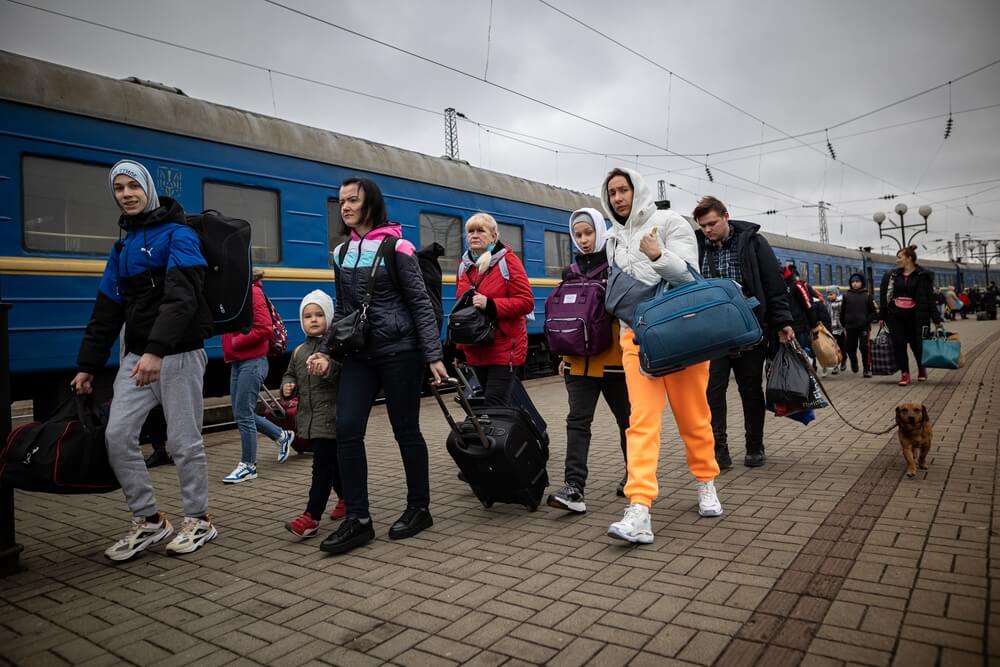For almost three years, Ukraine has been the only nation among modern democracies to enforce a general travel ban on men of military age. Neither in Iraq, Iran, or Afghanistan—countries with a long history of war—nor even in Russia, an outright dictatorship, have such restrictions been enforced.
Israel, the only remotely comparable case, briefly restricted the departure of men during its recent war, but these restrictions lasted barely a year. Ukraine’s policy, on the other hand, remains indefinite, a measure with no modern precedent in the democratic world.
The consequences are mounting. Instead of curbing emigration, the closed borders have fuelled a huge underground economy of forged documents, fabricated exemptions, and illicit crossings.
Men desperate to leave have learned the price of freedom in the form of bribes and loopholes, including falsified medical records and even hastily arranged dependents. Others take more dangerous routes, slipping across the border with the help of smugglers.
Last year alone, official data shows that 450,000 people left Ukraine without returning. Even under cautious estimates—assuming just 100,000 were men, half relied on illicit means, and the going rate for a bribe was $10,000—the corruption fuelling these escape routes amounts to at least half a billion dollars annually.
The actual amount is likely significantly higher, potentially reaching billions. This money does not vanish into thin air; it moves through established channels, lining the pockets of state officials and the intermediaries who assist in evasion.
The River of Death
And those who cannot afford to pay? They take their chances in the mountains, sneaking through dense forests under the cover of night, or venturing into the Tisza River that meanders along Ukraine’s western border.
The Tisza has earned a grim nickname—“the River of Death”—its currents claiming the lives of those who see no other way out. Over the past three years, the bodies of dozens of young men have been pulled from its waters.
At the same time, the closed borders have become a powerful deterrent for refugees who are considering returning. According to UN data, more than six million Ukrainians remain scattered across the globe.
The longer the war drags on, the longer the travel restrictions remain in place, the more permanent the exile becomes
For the men among them, the prospect of coming home means accepting that they may never be allowed to leave again. Unsurprisingly, this fear keeps many away.
In the early days of the war, when the first wave of refugees fled, 50% of Ukrainian refugees said they “definitely” planned to return, with another 24% “rather planning” to do so.
By January 2024, that confidence had waned. The numbers had dropped to 26% each. The longer the war drags on, the longer the travel restrictions remain in place, the more permanent this exile becomes.
Conscription
These border policies are symptomatic of a deeper failure: Ukraine’s inability to build a voluntary recruitment system capable of sustaining its military. Three years into a full-scale war, enlistment remains driven more by coercion than by conviction.
Conscription is not just a bureaucratic necessity; it has become one of the primary forces pushing men to flee, willing to risk everything rather than surrender to a system that leaves them no choice.
But an equally significant factor is the economic opportunity—or rather, the lack of one.
Before the war, Ukraine relied heavily on migrant labour. In 2021, remittances from workers abroad brought in over $18 billion—more than the country received in foreign investment.
Remittance flows have steadily declined in the last two years
At any given time, around three million Ukrainians were employed outside the country, a figure that surged to seven million during seasonal work. That flow of labour and capital helped sustain entire regions.
Today, even with the military swelling to one million personnel, the domestic economy has absorbed only a fraction of this workforce. The rest face dwindling prospects at home, where travel restrictions have stifled business expansion, trade, and international partnerships.
Remittance flows have steadily declined in the last two years. The decline is the direct result of restrictions that prevent millions of Ukrainians from seeking work abroad and that impose strict controls on outward and inward transfers under martial law.
With no change in policy in sight, the decline is likely to continue, further burdening an economy already struggling under the weight of war.
Reopening of the borders
Some fear that the reopening of the borders would trigger mass emigration. In the short term, this would probably be the case. But strategically, the lifting of restrictions could have the opposite effect.
Removing the “closed cage” effect would help restore trust in institutions and reassure Ukrainians—both inside and outside the country—that staying is a choice, not a punishment. It could also encourage refugees to return, knowing that they will not be trapped.
 Removing the “closed cage” effect would help restore trust in institutions and reassure Ukrainians that staying is a choice, not a punishment
Removing the “closed cage” effect would help restore trust in institutions and reassure Ukrainians that staying is a choice, not a punishment
And, perhaps most importantly, it would dismantle the lucrative black market of escape routes that has flourished under the current policy, depriving corrupt officials and smugglers of a business built on desperation.
The supposed benefits of Ukraine’s border restrictions are difficult to measure, but their costs are becoming painfully clear.
The economy is experiencing significant losses, corruption has found yet another fertile ground, and the country’s demographic balance is trending towards a long-term decline.
Those who profit from the system—officials and smugglers alike—have little incentive to see it dismantled. But the longer these policies remain in place, the deeper the damage will be.
In recent months, European officials have hinted that Ukraine must reconsider its martial law restrictions. Reopening them—for all Ukrainians—could be the first necessary step.